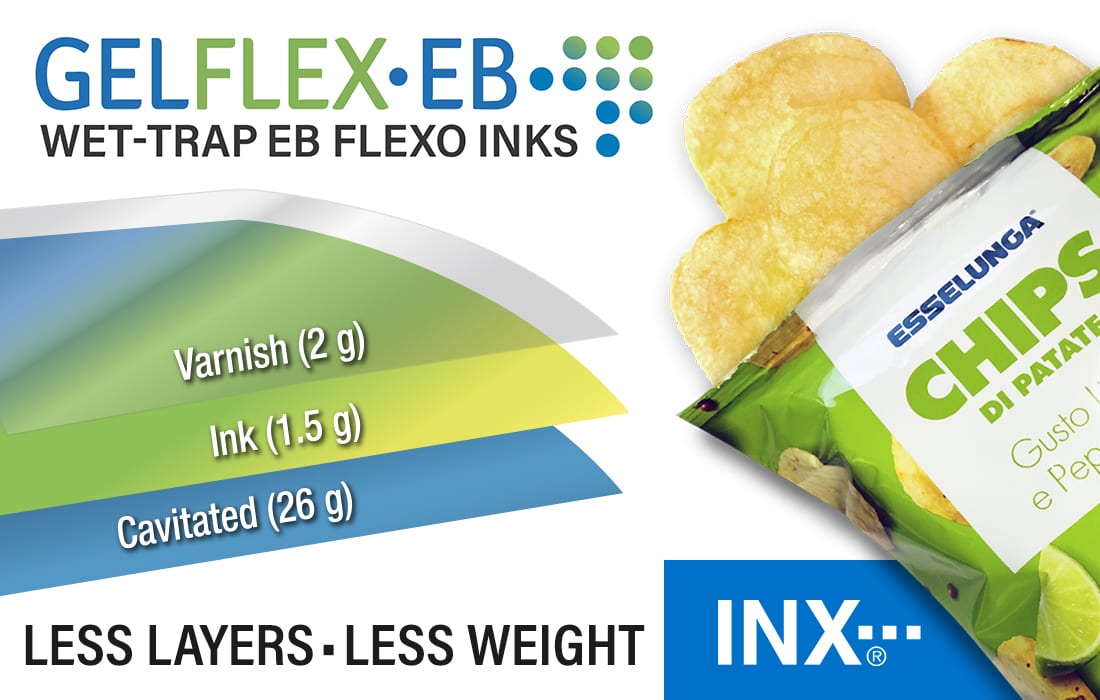

Machine Optimization for Sustainable Flexible Packaging
Converting machines can be optimized for handling sustainable packaging materials, and manufacturing partners can support the transition to new, sustainable flexible films. Even with the present challenges, there are plenty of opportunities to be ready with the right packaging equipment and configurations.
By Jesse Rosenow
Throughout the COVID-19 pandemic, sustainability goals may have taken a backseat to safety concerns — but they never went away. In fact, 85% of Americans think about sustainability the same amount or more during the pandemic.1
Meanwhile, the flexible packaging industry continues to develop new film structures focused on sustainability as the demand continues to grow. For instance, Polaris Market Research predicts the biodegradable packaging market will reach $21.6 billion by 2026.2
How will packaging converters rise to meet the challenge? Now more than ever, there are new options for optimizing production lines to manage the latest flexible films. Here’s how manufacturing partners are supporting the transition to newer sustainable options.
ADVERTISEMENT
A Shift in Focus
As the pandemic unfolded, it caused a shift in priority for the flexible packaging industry. Nearly everyone bought more items from grocery stores to eat at home, and many people added a pet to the family — requiring more pet food and treats — so the industry struggled to simply get packages out the door.
Even so, manufacturing partners and end users continued to have conversations about sustainability. New prospects and existing customers almost uniformly are asking about machinery that can manage new, sustainable film options.
The goal of sustainable films is to move the industry into a circular economy in which waste is eliminated by design in both production and the end-consumer level.3
While flexible packaging overall has a far smaller carbon footprint than other types of containers, sustainable solutions will help clients meet the market demand for visibly “green” products, whether that means the end-of-life product is ultimately recyclable or biodegradable.
Progression in chemical recycling is allowing different types of polyethylene and polypropylene to go into the same processing system and come out as a common base polymer. While such advances are exciting, they’re not yet readily available at the end-of-stream. But converters are already working to accommodate before this downstream process is resolved.

How OEMs are Rising to the Challenge
Designing equipment or improvements to processes as new film structures reach the market is like trying to hit a moving target. Flexible films created five years ago are drastically different than what they are today, and manufacturers are focused on improving systems to manage registration on these new structures.
When registration is poor, not only can the package have a poor appearance, but it can also increase the amount of scrap to manage. When the scrap rate is high, converters are defeating the purpose of running sustainable packaging — and OEMs are improving ways to control the material in the machines.
Most recently, the industry has focused on equipment and configurations for multi-layer polyethylene laminated films — those with high-density outer layers and a lower-density inner layer that can be recycled at a store drop-off. These films lack a stabilization layer, causing them to stretch easier than traditional films, creating challenges in registration. Industry improvements have been centered on creating stabilization to ensure uniform alignment and reduce waste in production.
One of the newer strategies involves improving the film registration in individual tension zones on the machine — instead of, for example, moving units to stay in line with the material.
OEMs are also developing new ways to protect more sensitive sustainable films from heat damage. This is most typically done by utilizing alternative sealing technologies (Ultrasonics) and removing residual heat from the film during machine stoppages.
Additionally, with the rise in popularity of digital printing, the industry is seeing a trend of shorter runs, which can be problematic when the changeover times are not minimized. But using new auto-registration features allow for simple changeovers with minor adjustments, lessening scrap and waste in the process.

Keeping Up with New Structures
Equipment manufacturers are actively engaged in finding solutions and opportunities for working with new film structures. They are going above and beyond to create strategic partnerships within the industry related to sustainable packaging to learn about the films and how they interact with the machines. For example, suppliers are sending new types of film for equipment manufacturers to test.
The industry is focused on engaging with partners, staying ahead of the changes and optimizing machines for future structures — even though it’s like working with a moving target — it can be slowed down enough to get it within our sights.
The bottom line: Converting machines can be optimized for handling sustainable packaging materials, and manufacturing partners can support the transition to new, sustainable flexible films. Even with the present challenges, there are plenty of opportunities to be ready with the right packaging equipment and configurations.
Jesse Rosenow is the sales engineer/technical projects leader at Totani America — a manufacturer of pouch making machines for flexible packaging.
Video by saicle / Creatas Video+ via Getty Images Plus. Photos courtesy of Totani America.
September 2021 // flexpackmag.com
